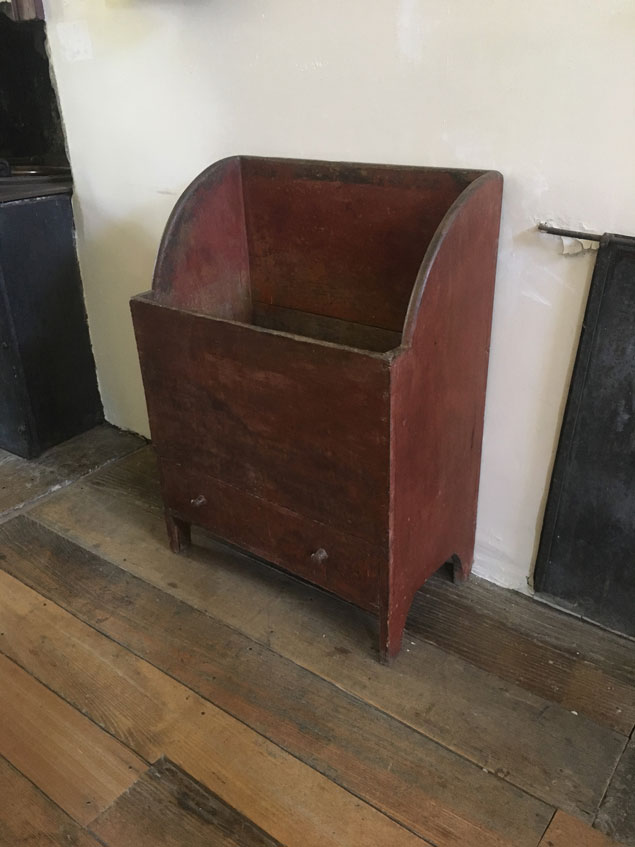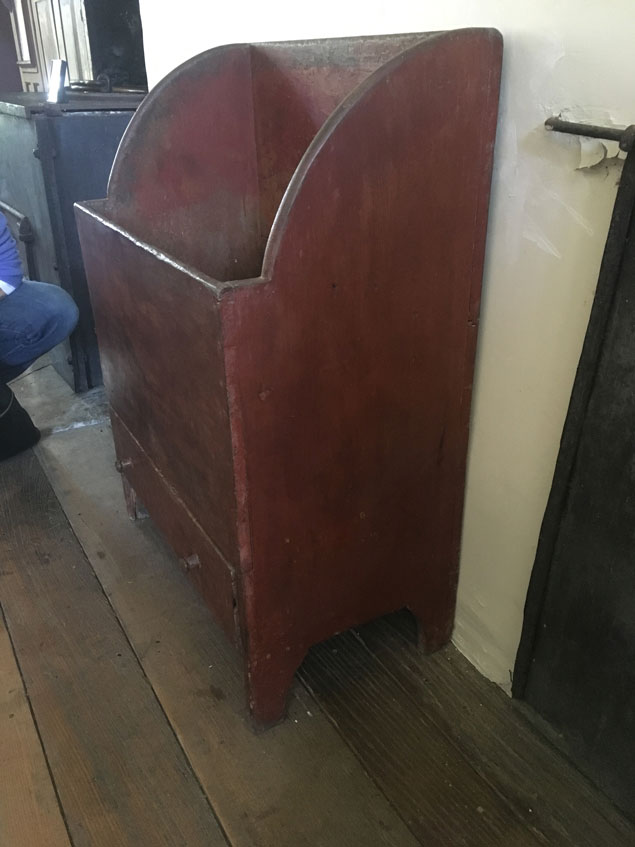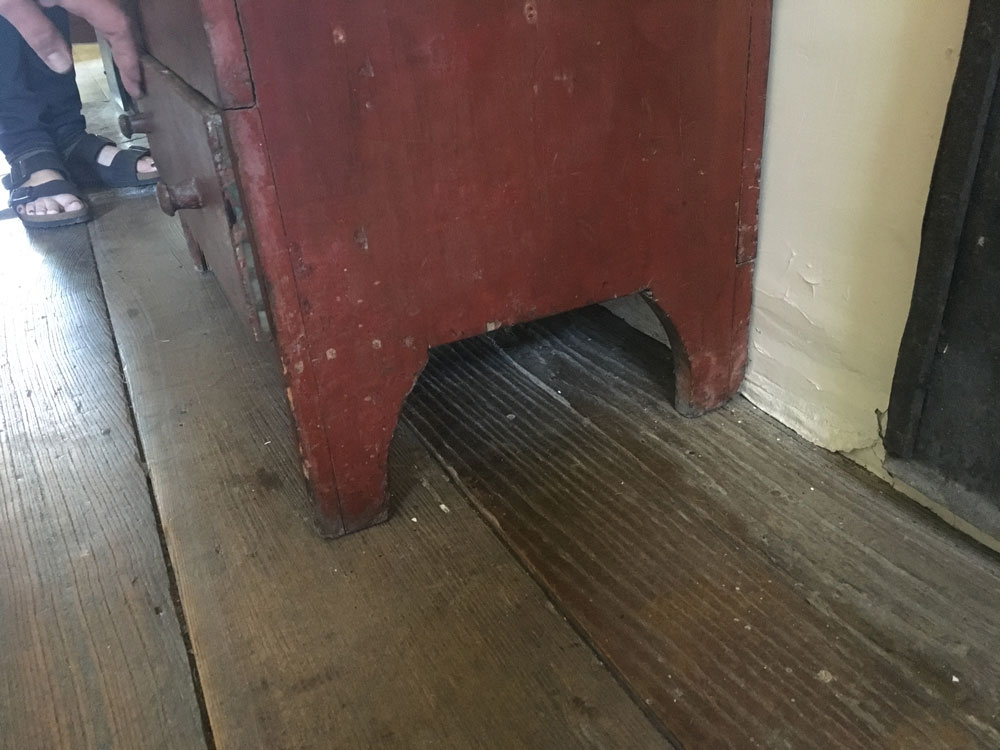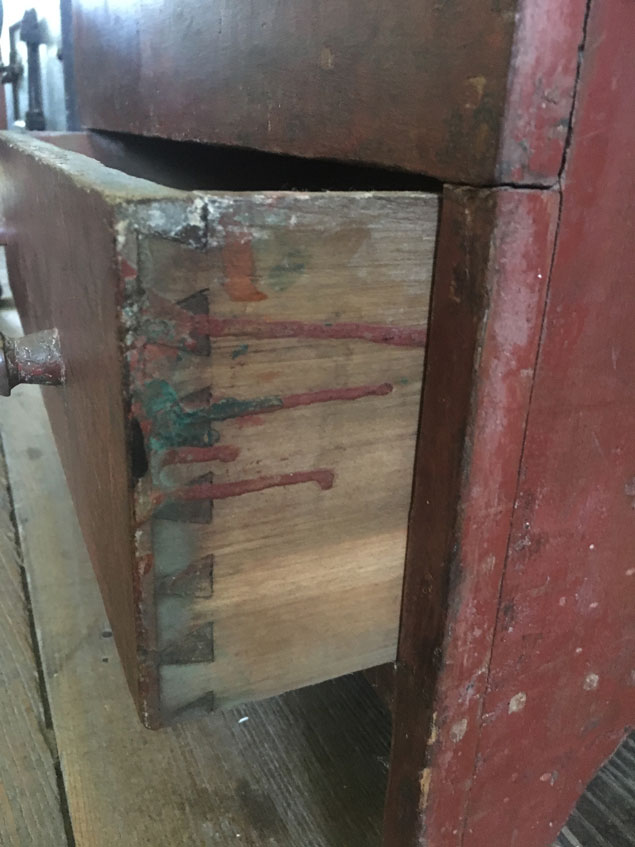As a furniture maker, visiting museums is important. But what is more important is visiting those same museums again and again. Every year you are a different person, and the same pieces of furniture will look new and different to you every time you visit.
On Sunday I took my 10th or 11th trip to the Shaker Village at Pleasant Hill in Harrodsburg, Ky., with woodworkers Megan Fitzpatrick and Will Myers. I got to visit a lot of old friends that day at Pleasant Hill, such as the wall-hanging cabinet and Saturday table. But I also made a new friend: a firewood box that I’d never noticed before.
This box represents what I like about Shaker design. It is simple, practical and shows an advanced understanding of geometry. The carcase itself is nailed together, but the parts are arranged so that there are no awkward places where parts overlap or are misaligned – something you see on a lot of vernacular furniture.
For example, the maker was careful to add small fake stiles (with nails) to the bottom of the case to make the drawer inset. As a result of this extra effort and a hundred other details the exterior carcase of the piece appears to be like the carcase of a complex piece of furniture, though it clearly is not.
The profile of the carcase shows the maker had a good grasp of geometry – Roman vs. Grecian. The curve on the side of the carcase is an elliptical arc with a perfectly sized fillet where the curve meets the front of the carcase. It’s like an enormous Grecian ovolo.
The feet on the sides of the carcase echoed this Grecian ovolo without screaming this fact.
And then (while no one was looking) we opened the drawer at the bottom. It had sweet and well-executed dovetails, a nice surprise on a nailed piece.
I hope to build a reproduction of this piece someday, but we’ll first have to get a working fireplace. The last time we lit a fire in our living room it ended with me running half-naked into the snow.
— Christopher Schwarz





The reason I love Shaker furniture is its simplicity. As a former chef, the more simple your food was, the harder it was to pull off. You had nowhere to hide the flaws.
So, the front of the box is not dovetailed into the sides? The I thought I saw some cut marks on the front edge on the first two photos. It does look like the side has a piece overlapping the front board just below the fillet.
Nope. Nailed. What you are seeing are wear marks. Promise.
The back appears to be ship lapped but I only see one joint (could be my cheap internet device). Did they use rather wide boards for this? I would think for the back of a piece they would prefer narrower stock. Though since the back would be quite visible when the box was running low or empty perhaps they went with the wider boards?
They used wide boards for everything because they were easily available. Many utility pieces had 16″ to 20″ wide components.
A tangental comment on your writing. I had never seen the word vernacular used in any way other than in reference to speech. I thought perhaps you’d used the word inappropriately. The closest reference book at hand was my old hardcopy Rodale Synonym Finder. Upon review you of course used the word appropriately. I just wanted you to know that I’m among many that enjoy your writing not solely for content, but also for the simplicity and elegance of style. Thank you.
Hmmm….I see the word vernacular employed commonly within the traditional arts? We see in all the time in such topics as: Vernacular Timber Frames, Vernacular Architecture, Vernacular methods of ceramic formation vernacular tool marks on stone.
It could be the subject matter? In some fields it seems to be very common.
Can you share overall dimensions? Thanks for highlighting this piece.
btw… I recently had the occasion to spend the night at Shaker Village. The room was immaculate and the bed was excellent. Very nice. Try it – you might like it…